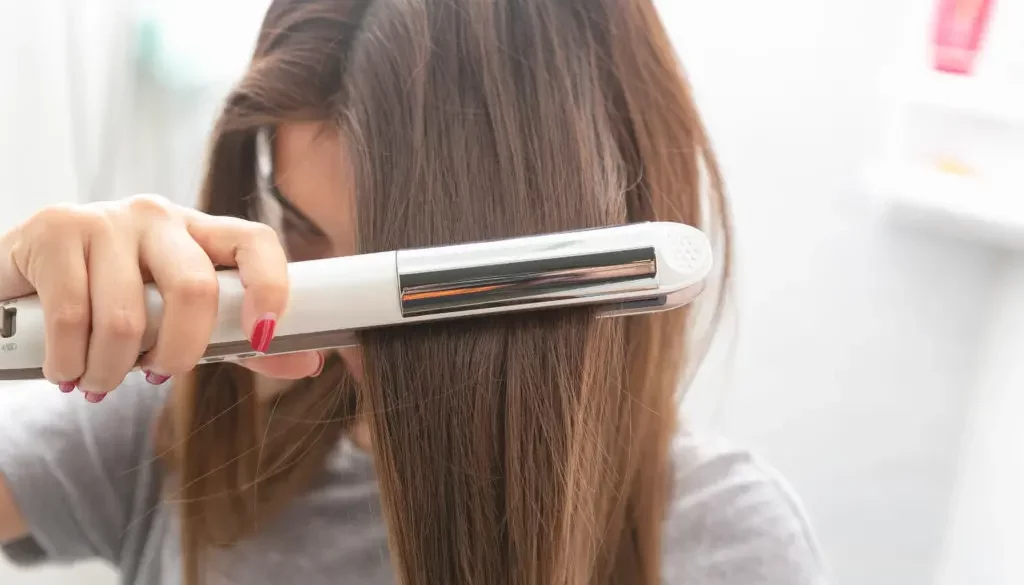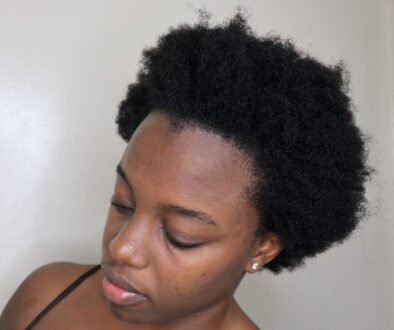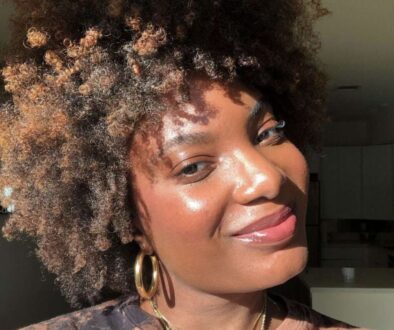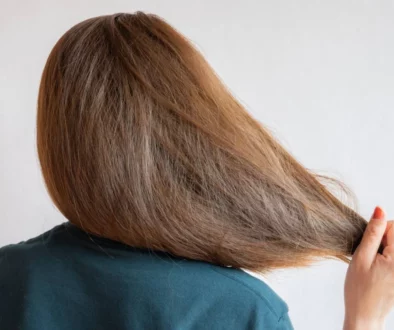Protecting Your Hair from Heat Damage: Tips and Tricks
Hair is a significant aspect of our identity, and for many, styling tools like straighteners and curling irons are daily essentials. However, constant exposure to heat can lead to severe damage, leaving your locks dull and lifeless. In the world of hairstyling, understanding the importance of protecting your hair from heat damage is paramount for maintaining its health and vitality. In this article, we’ll explore effective tips and tricks to protect your hair from heat damage, ensuring your mane stays healthy and vibrant.
Understanding Heat Damage
Heat styling tools have become an integral part of our daily beauty routines, offering quick and convenient ways to achieve the desired hairstyle. However, it’s crucial to understand the potential harm these tools can inflict on our precious locks.
Explanation of How Heat Styling Tools Can Harm Hair:
When subjected to high temperatures, hair undergoes structural changes that can lead to damage. The intense heat strips away the hair’s natural moisture, making it more prone to dryness, frizz, and breakage. Additionally, the cuticle, the outer layer of the hair shaft, can suffer damage, resulting in a lackluster appearance.
Discussion on Common Signs of Heat Damage:
Recognizing the signs of heat damage is essential for implementing preventive measures. Common indicators include split ends, increased brittleness, and a noticeable reduction in the hair’s overall health and vibrancy. It’s crucial to be mindful of these signals to address heat damage promptly.
Choosing the Right Heat Styling Tools
To mitigate the risks associated with heat styling, it’s imperative to make informed choices when selecting your styling tools. Here’s a closer look at key considerations for protecting your hair while maintaining your preferred style.
Tips on Selecting Quality Tools with Adjustable Heat Settings:
Investing in high-quality styling tools with adjustable heat settings allows for customization based on your hair type and styling needs. Different hair textures require different levels of heat, and having control over the temperature can significantly reduce the risk of damage.
IntroductionHair-Frien Alternatives Like Air-Drying:
While heat styling can provide instant results, exploring alternatives like air drying can contribute to the overall health of your hair. Air-drying is a gentle method that minimizes exposure to excessive heat, helping to preserve your hair’s natural moisture and integrity.
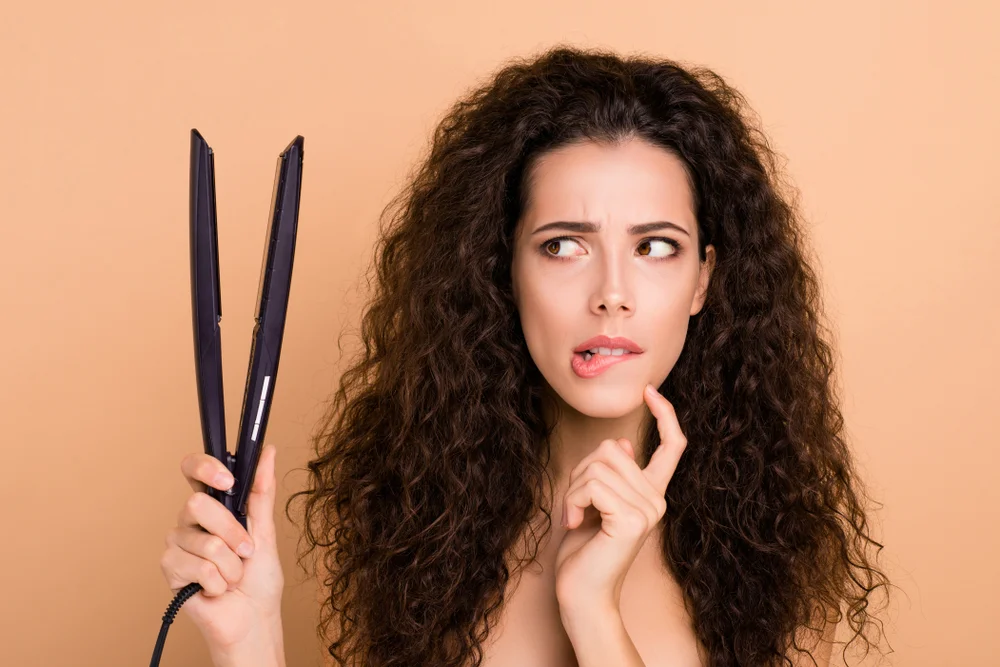
Prepping Your Hair
As we delve into the world of heat styling, it’s crucial to emphasize the significance of preparing your hair adequately. Prepping not only protects your tresses from potential damage but also ensures that your styling efforts yield the desired results.
The Importance of Using Heat Protectant Products:
Imagine a shield that guards your hair against the harsh effects of heat styling – that’s precisely what a good heat protectant product does. These formulations create a protective barrier, minimizing the impact of high temperatures on your hair’s structure. Using a heat protectant is a proactive step towards preserving your hair’s health and vitality.
Tips for Applying Heat Protectants Effectively:
Applying a heat protectant goes beyond a quick spritz; it requires a proper technique for optimal results. Start by dividing your hair into sections and apply the protectant evenly, ensuring complete coverage from roots to tips. Comb through your hair to distribute the product uniformly, and always follow the product-specific guidelines for the best application practices.
Adjusting Heat Settings
Once your hair is prepped with a protective layer, the next step is understanding the intricate relationship between heat settings and the unique characteristics of your hair.
The Correlation Between Heat Settings and Hair Type:
Different hair types react differently to heat. Fine hair is generally more delicate and may require lower temperatures to prevent damage, while thicker or coarse hair can withstand higher heat levels. Recognizing your hair type is the first step towards making informed decisions about the appropriate heat settings for your styling tools.
How to Determine the Right Temperature for Your Hair:
Modern styling tools come equipped with adjustable heat settings, offering you the flexibility to tailor the temperature to your hair’s needs. Experiment with lower temperatures initially and gradually increase until you find the sweet spot where your hair responds well to styling without unnecessary exposure to excessive heat.
Limiting Frequency of Styling
While it’s tempting to style your hair daily, understanding the consequences of frequent heat styling is essential for maintaining long-term hair health.
The Impact of Frequent Heat Styling on Hair Health:
Consistent exposure to high temperatures can lead to cumulative damage, leaving your hair prone to dryness, breakage, and a lackluster appearance. By acknowledging the impact of frequent styling, you can make conscious choices to protect your hair and promote overall well-being.
Suggestions for Embracing Natural Hairstyles on Non-Styling Days:
Give your hair a well-deserved break by embracing natural hairstyles on days when styling tools can take a backseat. Braids, buns, or letting your hair air-dry are excellent alternatives that not only reduce the risk of heat damage but also allow your hair to recover and rejuvenate.
Proper Technique During Styling
As you embark on the styling journey, understanding the importance of proper technique is pivotal to safeguarding your hair from unnecessary heat damage.
Guidance on Maintaining a Safe Distance Between Hair and Styling Tools:
Maintaining a safe distance between your hair and the styling tool is a fundamental practice. Holding the tool too close can subject your hair to intense heat, increasing the risk of damage. Keep a distance of at least one inch between the tool and your hair, ensuring effective styling without compromising its health.
Techniques for Minimizing Heat Exposure on Each Hair Section:
Divide your hair into manageable sections to ensure even styling without prolonged exposure to heat. Work methodically, focusing on one section at a time. This not only allows for more precise styling but also minimizes the overall time your hair is exposed to heat, reducing the potential for damage.

Cooling Down Your Hair
The aftermath of styling is just as crucial as the styling process itself. Cooling down your hair is an often overlooked yet essential step in maintaining its health.
The Significance of Allowing Hair to Cool After Styling:
After subjecting your hair to heat, it’s vital to allow it to cool naturally. This process is as crucial as the styling itself, as it gives your hair time to regain its structure and integrity. Rushing to manipulate or brush your hair immediately after styling can lead to additional stress and potential damage.
Tips on Preventing Additional Heat Exposure During the Cooling Process:
While your hair is cooling down, refrain from exposing it to additional heat sources. Avoid using other styling tools or exposing your hair to direct sunlight. Allowing your hair to cool naturally ensures that the styling process concludes without unnecessary additional stress.
Hair Care Routine for Heat-Damaged Hair
For those already grappling with heat-damaged hair, adopting a specialized care routine becomes imperative for recovery.
Recommendations for Specialized Products for Damaged Hair:
Invest in high-quality, specialized products designed for damaged hair. Look for shampoos and conditioners that prioritize moisture and repair. Additionally, incorporate leave-in treatments and serums rich in nourishing ingredients to promote recovery and restore your hair’s natural luster.
Establishing a Nurturing Routine to Promote Hair Recovery:
Beyond product selection, establishing a nurturing routine is key to promoting recovery. Avoid excessive heat styling whenever possible, opting for gentler alternatives. Regular trims can help eliminate damaged ends, and incorporating deep conditioning treatments into your routine enhances moisture and repair.
DIY Hair Masks for Repair
When it comes to rejuvenating heat-damaged hair, the power of DIY hair masks cannot be overstated. These nourishing treatments, made from readily available ingredients, can work wonders in restoring your hair’s health and vitality.
Homemade Recipes for Nourishing Masks to Counteract Heat Damage:
Avocado and Olive Oil Mask:
- Mash one ripe avocado and mix it with two tablespoons of olive oil.
- Apply the mixture to damp hair, ensuring even distribution from roots to ends.
- Leave it on for 30 minutes before rinsing thoroughly with lukewarm water.
Honey and Yogurt Mask:
- Combine two tablespoons of honey with half a cup of plain yogurt.
- Apply the mixture to clean, damp hair, focusing on the damaged areas.
- Leave it on for 20-30 minutes before rinsing with a mild shampoo.
Coconut Oil and Banana Mask:
- Blend one ripe banana with three tablespoons of melted coconut oil.
- Apply the mask to your hair, covering it with a shower cap for 45 minutes.
- Rinse thoroughly, and follow up with your regular shampoo and conditioner.
The Benefits of Natural Ingredients Like Avocado, Honey, and Coconut Oil:
These natural ingredients boast unique properties that contribute to the overall health of your hair. Avocado is rich in fatty acids, providing intense moisture and promoting shine. Honey is a natural humectant, attracting and locking in moisture, while coconut oil penetrates the hair shaft, preventing protein loss and adding a protective layer against heat damage.
Choosing the Right Hairstyles
Selecting hairstyles that minimize the need for excessive heat styling is a strategic approach to maintaining your hair’s well-being.
Haircuts and Styles that Reduce the Need for Excessive Heat Styling:
Layered Haircuts:
Opt for layered cuts that add texture and volume, allowing you to achieve stylish looks without excessive heat.
Braids and Twists:
Experiment with braids, twists, or even a combination of both. These styles are not only chic but also protect your hair from daily styling stress.
Natural Texture Embrace:
Work with your hair’s natural texture instead of against it. Whether it’s waves, curls, or straight locks, embracing what you naturally have reduces the reliance on heat tools.
How to embrace your natural texture while protecting your hair:
Understanding your hair’s natural texture is the first step to embracing it. Use styling products that enhance rather than alter your texture. Air-drying is a fantastic technique to let your natural beauty shine without the need for excessive heat.
Sleeping Habits for Healthy Hair
Believe it or not, your sleeping habits can significantly impact the health of your hair. Making small adjustments can go a long way in minimizing the need for morning styling.
The Impact of Pillowcases on Hair Health:
Opt for silk or satin pillowcases as they cause less friction than cotton. This reduces the risk of hair breakage and tangling, contributing to overall hair health.
Tips for Protecting Hair During Sleep to Minimize Morning Styling:
Loose Braids or Ponytails:
Tie your hair loosely in a braid or ponytail before sleep to prevent it from rubbing against the pillow and creating friction.
Silk or Satin Scarves:
Wrap your hair in a silk or satin scarf before bedtime. This protective barrier minimizes friction and preserves your hairstyle.
Conclusion:
In the journey to achieve fabulous hair, placing a premium on its health is non-negotiable. The fusion of style and vitality is attainable through a commitment to the well-being of your locks. As you navigate the world of hairstyling, consider these fundamental tips and tricks that harmonize the allure of stylish locks with the radiance of healthy hair.
By prioritizing preventive measures such as using heat protectant products, adjusting heat settings wisely, and limiting the frequency of styling, you lay the foundation for resilient and vibrant hair. Remember to maintain a safe distance during styling, allow your hair to cool naturally, and indulge in rejuvenating DIY hair masks to counteract any potential damage.
Also Read:
The Ultimate Guide to Glowing Skin: Tips and Tricks
